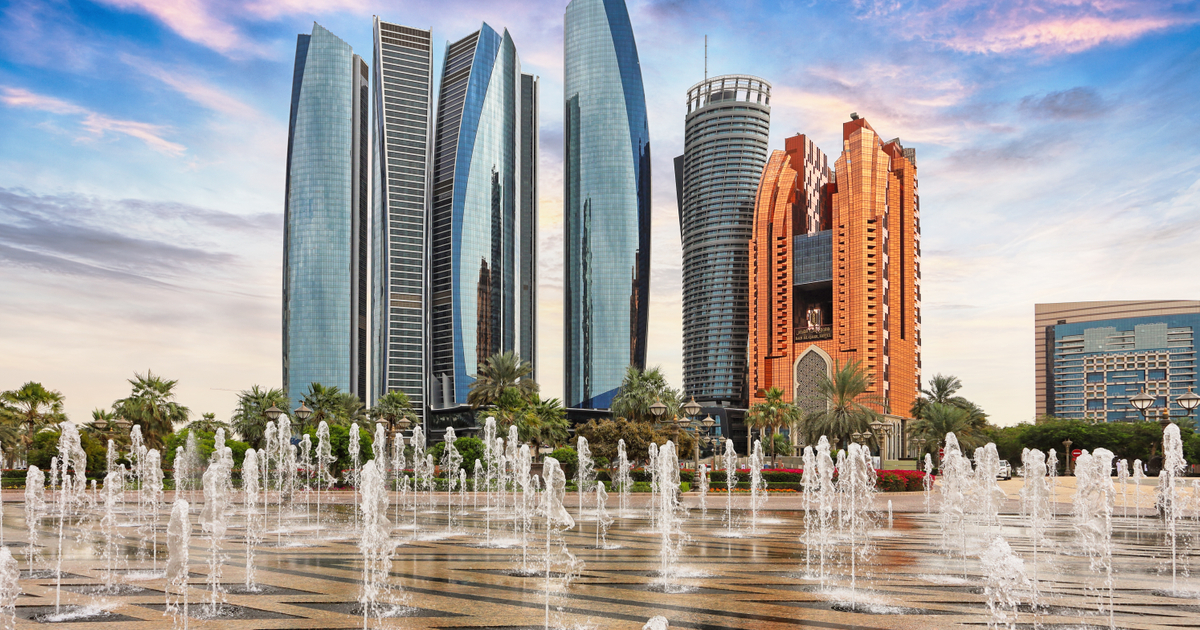Growing Asia & Middle East investment links to reshape global capital flows
More liquidity from new investment channels and new sources of cross-border capital for companies represent compelling opportunities for investors and corporates as Asia and the Middle East become more closely connected, believes HSBC.

Promoted Content
More liquidity from new investment channels and new sources of cross-border capital for companies represent compelling opportunities for investors and corporates as Asia and the Middle East become more closely connected, believes HSBC.

November 10, 2024
A shift in how savings are recycled into investments amid rising levels of wealth creation in Asia and the Middle East is starting to transform opportunities for businesses and investors in these regions.
While this profound shift in capital flows and financial infrastructure is in its early stages, the new networks of capital beginning to emerge look set to challenge existing global financial infrastructure. Ultimately, Asia and the Middle East are on a path to grow in importance in today’s more complex, multipolar world.
This is just the beginning. Over the years ahead, these new networks of capital should ensure that more Asian and Middle Eastern wealth is invested in these regions – and flows between them. Increasingly large, liquid and open regional capital markets should also attract greater global investment to some of the world’s most dynamic economies.
Shifting forces drive new market dynamics
The new capital flows are being spurred by closer government-to-government links, economic diversification agendas, the energy transition and innovation.
In particular, there are six key shifts taking place:
Intra-regional financial infrastructure getting stronger – more public and private wealth from Asia and the Middle East will be invested within and between the two regions. At the same time, enhanced regulatory frameworks and collaboration between regional stock exchanges will create additional investment and capital-raising opportunities.Regional capital markets flourishing – new listings, including cross-listings, will bolster scale and liquidity in these regions, plus greater liberalisation will improve foreign investor access and facilitate greater direct investment between the two regions.
Index weightings growing in significance – larger, as well as more liquid and open capital markets in Asia and the Middle East, will result in bigger weightings in global indices, encouraging higher allocations to domestic and regional markets.
The asset management sector becoming more robust and competitive – new policies and incentives will support the development of the domestic asset management industry across Asia and the Middle East, with bigger local wealth pools attracting more global players.
Private markets expanding in size and scope – greater appetite for these assets in Asia and the Middle East will offer the opportunity for investors to bypass existing public markets infrastructure and commit capital directly to companies in each other’s region.
Local currencies being more widely used – more direct and private market investments between Asia and the Middle East has the potential to be increasingly denominated in regional currencies, especially the Renminbi.
Three key opportunities from greater connectivity
Against the backdrop of this new landscape, three key opportunities are emerging for investors and corporates.
Firstly, more robust and extensive intra-regional financial infrastructure will deepen liquidity and open up new investment channels.
For example, the Saudi and UAE stock exchanges, and their Asian counterparts, have signed nine MOUs since 2018, while Asia’s first Saudi Arabian exchange-traded fund (ETF) launched in Hong Kong in 2023. More recently, in late October 2024, the market saw the launch of the first ETF in Saudi Arabia to track the Hong Kong equity market, marking another milestone for bilateral collaboration between the regions.
Secondly, rising levels of investment activity between Asia and the Middle East supports corporate growth ambitions by offering companies more access to cross-border capital through strategic partnerships and equity investments.
Thirdly, the imperative for the Gulf economies to diversify beyond oil and gas is creating new sources of capital flows, with a focus on infrastructure and the energy transition as long-term themes.
Such a dynamic landscape offers key ways for HSBC to capitalise on a track record of connecting Asia and the Middle East for over 130 years. HSBC is well-positioned to work with corporates, institutional, retail and family office investors in both regions as they pursue such opportunities.
Click here to read HSBC’s full report on new networks of capital, and their implications for businesses and investors.
¬ Haymarket Media Limited. All rights reserved.
Markets Companies Promoted Content #investment #middle east #asia #infrastructure #asset management #index #hsbc #newnetworksofcapital #asiamenat
 ValVades
ValVades 



















.jpg&h=630&w=1200&q=100&v=6e07dc5773&c=1)












